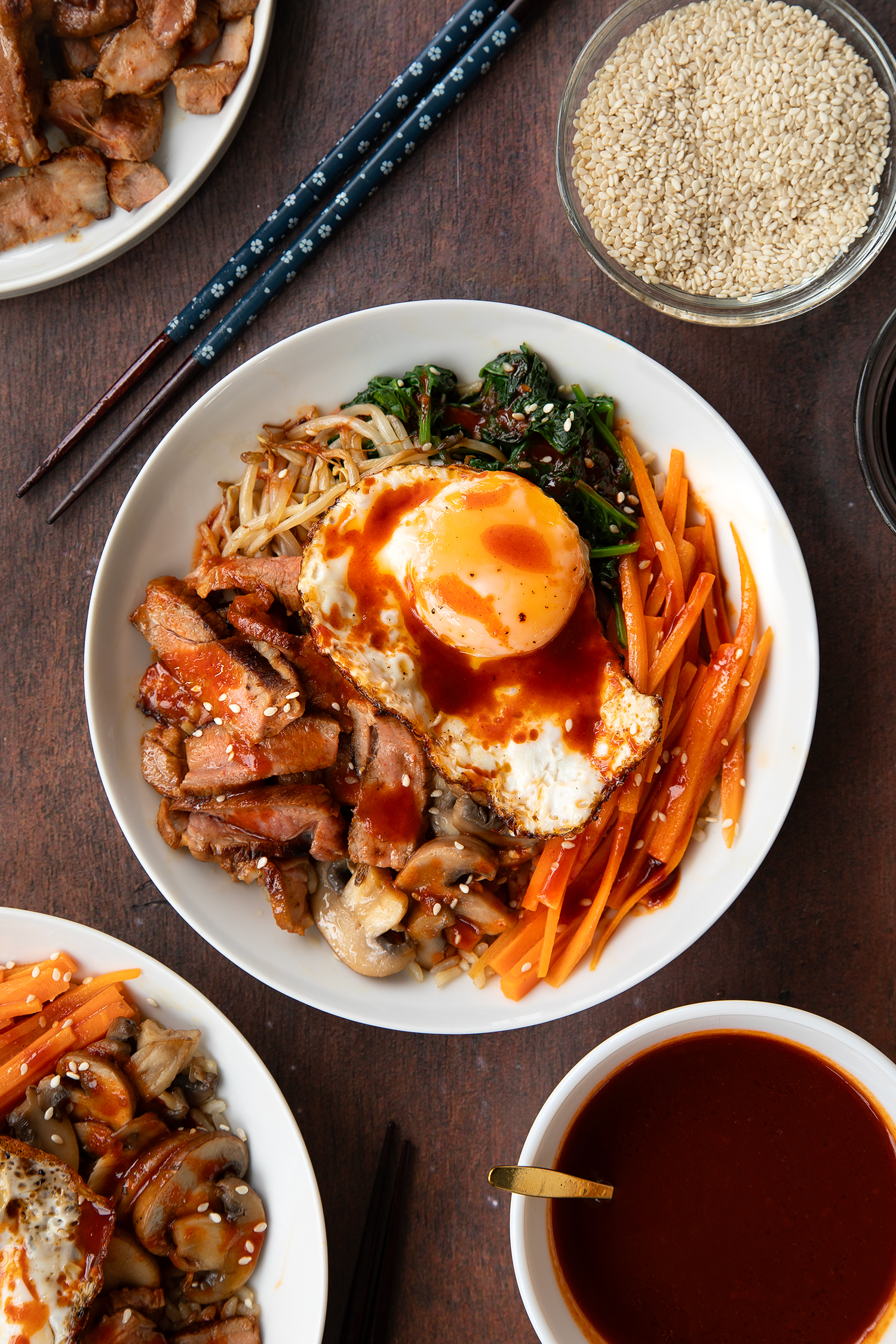
Ingredients
For the sauce:
- 4 tbsp gochujang paste
- 1 garlic clove, minced
- 2 tsp soy sauce
- 1 tbsp toasted sesame oil
- 1 tbsp caster sugar
- 2 tbsp rice vinegar
- 2 tbsp mirin
For the lamb:
- 4 Welsh Lamb leg steaks (about 300g)
For the veg:
- 2 large carrots, cut into thin batons (julienned)
- 300g mushrooms, sliced
- 300g bean sprouts
- 300g spinach
- 2 tsp sesame seeds
- Sesame oil, to fry
- Soy sauce, to taste
For the rice:
- 2 x 250g brown rice microwave pouches (or 250g uncooked brown rice)
To top:
- 4 medium eggs
30
Cooking Time
60
Prep Time
4
Serves
Bibimbap is a Korean rice dish, typically made with a base of short-grain white rice, topped with sautéed vegetables, marinated meat, and a fried egg.
The crucial final addition is a generous helping of a spicy, richly delicious sauce made from gochujang paste – a Korean fermented chilli paste with a hot, savoury, salty, sweet flavour like no other. If you love Kimchi, you already love gochujang!
For this Welsh Lamb bibimbap, I’ve gone for brown rice because the nuttiness compliments the lamb, but you can use white rice or sushi rice if you prefer a more traditional bowl.
- If you’re cooking your brown rice from scratch, do this first following the pack instructions, which will probably take about 30 minutes.
- Make the bibimbap sauce by mixing the gochuang paste, minced garlic, soy sauce, sesame oil, sugar, rice vinegar, and mirin in a small bowl.
- Place the Welsh Lamb leg steaks on a plate, pat dry with some kitchen paper and then cover with 2-4 tbsp of the sauce, rubbing over all sides. Cover and place in the fridge to marinate for 30 minutes.
- Retrieve your steaks and heat a little sesame oil in your hot pan. Sear the steaks for just 2 minutes per side, or less if they’re on the thin side. You want the outside to caramelise but the inside to stay pink as the lamb will continue cooking when stirred into the hot rice later.
- Cover your lamb and give it 5 minutes to rest. If you’re using a microwave rice pouch, you can cook it now.
- Heat a little sesame oil in a hot pan and fry the vegetables one by one for just 1-2 minutes each until just cooked, placing them on a covered, warm plate as you go. You can add a splash of soy to any or all of them if you like, and a sprinkle of sesame seeds to the spinach for crunch and flavour.
- Once the lamb has rested, slice thinly against the grain.
- Finally, fry your eggs, aiming for them to be crisp at the edges with jammy yolks.
- Now quickly assemble your bibimbap – spoon the piping hot rice into the bottom of your bowls, then top with each vegetable in turn, then the lamb, and finally add the freshly fried egg.
- Drizzle with the bibimbap sauce and serve. To eat, dig in and stir everything together into the hot rice. If you’re not used to the heat of gochuang, go easy on the sauce for serving and then stir in more to taste.
